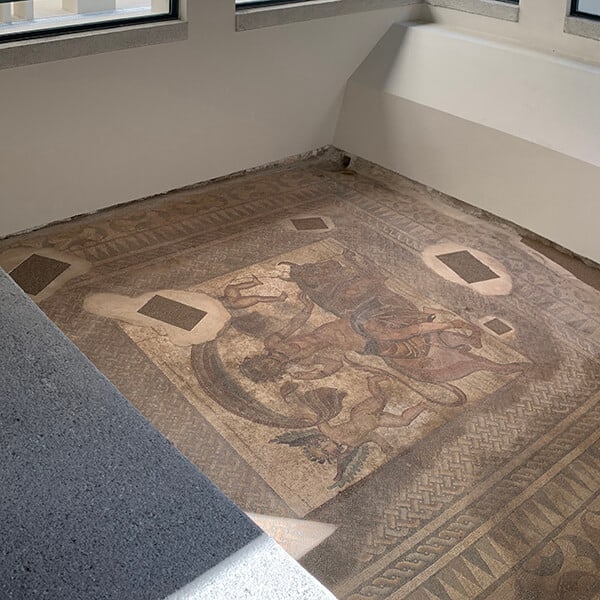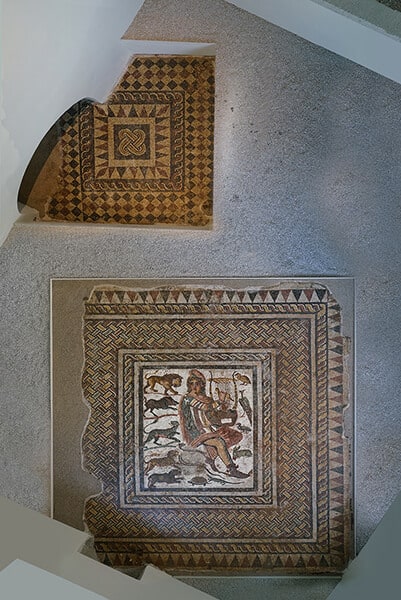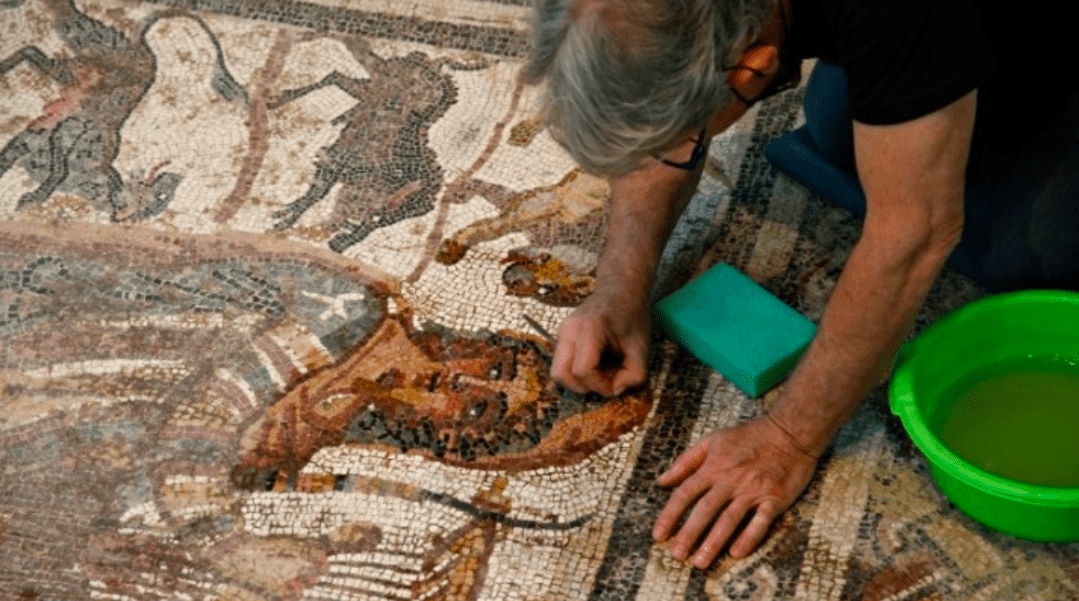The House of Mosaics is a museum in Sparta, Greece constituting a rare architectural space housing two rare Roman floor mosaics.
The two mosaics, depicting the abduction of Europe and Orpheus playing his music, are elaborate floors of two spaces of adjacent luxurious roman villas.
"The Rape of Europa" (2.06 by 2.00 meters) and "Orpheus Charming the Animals" (1.40 by 1.13 meters) are dated somewhere between the end of the 3rd century AD and the start of the 4th century AD.
The mosaics were discovered accidentally - Europa in 1872 in a garden and Orpheus in 1890 in a wine storage space - on private property.


The property was bought by the state and a shelter erected over them for protection, after which the mosaics fell to obscurity.
The mosaic pavement of Europa was the first mosaic pavement unearthed in the newly established city of Sparta. A total of 170 mosaic pavements have been excavated at 128 locations within the city of Sparta, dating from Hellenistic (3rd, 2nd centuries BC) to the Early Byzantine period.
Neither the exact character and function of the spaces the two tiles decorated was adequately substantiated nor their possible relevance.
However, latest archaeological data indicate their attribution to two adjacent wealthy roman houses (domus).
The mosaic pavement of Europa can be correlated with the mosaic pavements of two spaces of a house extended to the east, while the mosaic pavement of Orpheus in all likelihood was part of a bath of another house excavated to the south
According to the House of Mosaics, the mosaic pavements of Europa and Orpheus constitute brilliant testimonies of the prosperity of Sparta during the Roman Imperial period and prove its privileged position in the empire, as a free city.
Twenty years ago, former government minister Ioannis Varvitsiotis (also father of a current minister) came across the two mosaics and dedicated his efforts toward exhibiting them to the public.
Together with exclusive funding (totalling 331,000 euros) by the Stavros Niarchos Foundation, the support of the Ministry of Culture, and provision of funding for the study preceding the licensing of the project by the A.G. Leventis Foundation, Varvitsiotis’ work has resulted in the erection of two small buildings which now each house a mosaic - and visitors are able to visit the complex for free.
Since first opening to the public in May 2021, the House of Mosaics has received 8,000 visitors.
The official inauguration of the museum is to be held on November 21, six months after the building opened to the public.
Read also: How FiloXenia Made it All the Way to Greece


